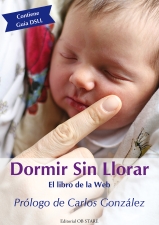Todo está muy bien. Pero estoy flipando con la madre
Y si la niña no come cuando le toca, ala ! se queda sin comer hasta la proxima toma
Intentamos decirle un montón de cosas pero ella es muy complicada,
A ver si alguna de ustedes sabe de algún buen libro en inglés que me pueda recomendar, para yo regalarselo y ver si de esta manera puedo persuadirla un poco de que cambie esos metodos absurdos.
Gracias
editado para quitar nombres. Se han mosqueado conmigo







